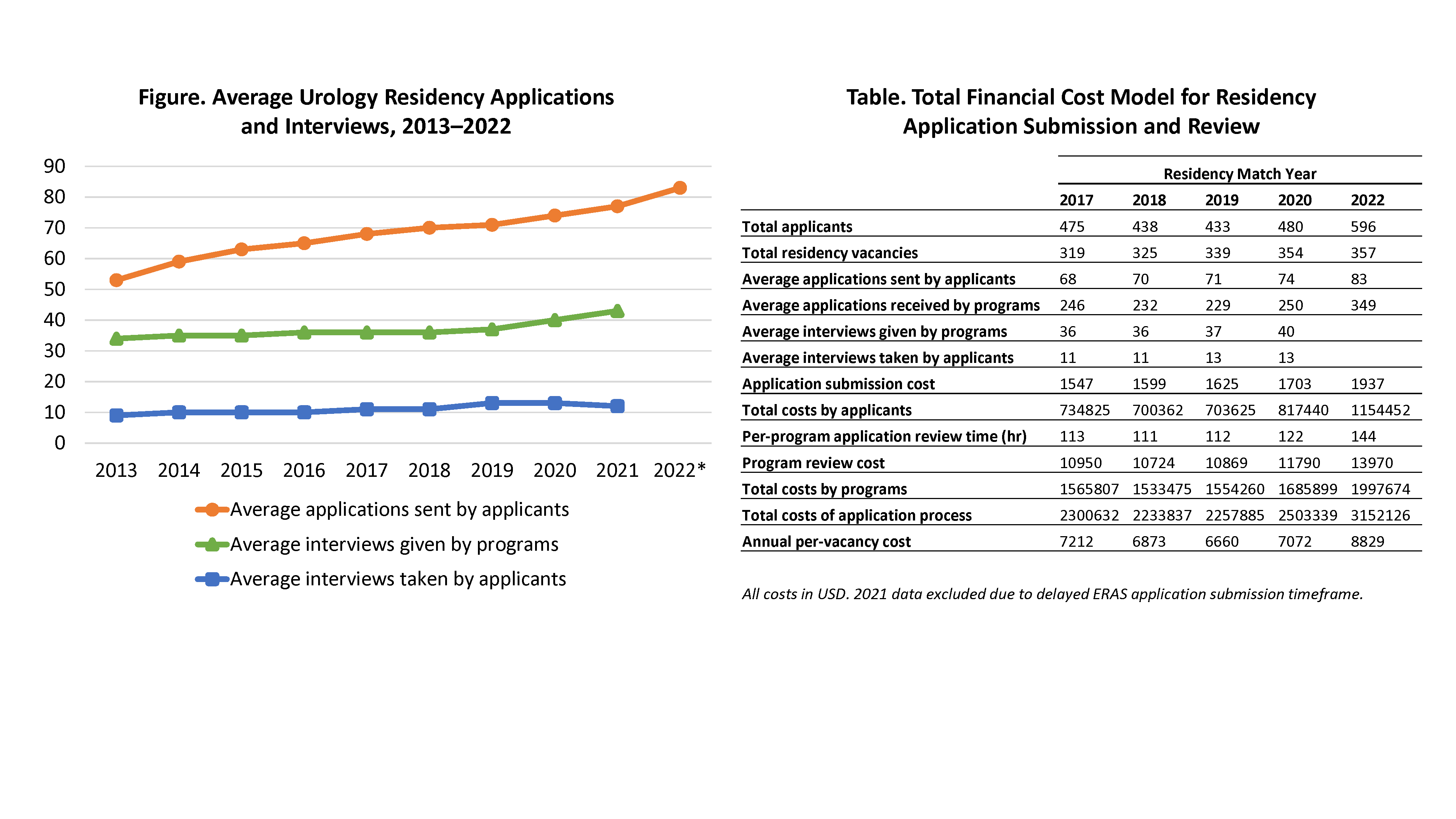Back
Poster, Podium & Video Sessions
Podium
PD30: Education Research III
PD30-03: Total Financial Burden of Increasing Urology Residency Applications on Applicants and Programs
Saturday, May 14, 2022
1:20 PM – 1:30 PM
Location: Room 243
Kevin Koo*, Elizabeth Bearrick, Bridget Findlay, Candace Granberg, Rochester, MN

Kevin Koo, MD, MPH
Mayo Clinic
Podium Presenter(s)
Introduction: The annual volume of urology residency applications continues to rise. Previous studies have assessed applicants’ expenses without accounting for the time cost borne by program faculty. We aimed to assess the total financial burden of continued increases in application volumes by modeling costs incurred by both applicants during submission and program faculty during application review.
Methods: Public data on urology residency applicants were obtained from the Electronic Residency Application Service (ERAS) and American Urological Association. To model financial costs for applicants, we calculated ERAS submission fees and assessed the total applicant pool by year. For program costs, we assumed that every submitted application receives a 10-minute screening review by 1 reviewer, and a subset of applications equal to twice the average number of interviews given by programs receives a 30-minute full review by 2 reviewers. We calculated the average hourly wage of academic urologists based on published salary data and extrapolated per-program costs to 143 US programs.
Results: From 2013 to 2022, the average number of applications submitted per applicant increased 57% (Figure). The corresponding ERAS application fees rose 67%, from $1157 to $1937 per applicant. However, average numbers of interviews given by programs and taken by applicants remained relatively static (Figure). In the total cost model for 2017-2022, total applicant submission costs rose from $0.7M to $1.2M (Table). The average number of applications received per program increased 42%, from 236 to 349 applications, leading to a 27% increase in program faculty time to review, from 113 to 144 hours. Extrapolated to all US programs, total program costs rose from $1.6M to $2M. Thus, total costs of application submission and review increased from $2.3M to $3.2M, corresponding to a rise in per-vacancy costs of 22%, more than twice the rate of inflation in the same period.
Conclusions: Increasing urology residency application volumes have resulted in substantially higher total financial costs of the submission and review process. Efforts to control the time cost of faculty review in the setting of persistent increases in application volume may lead to reliance on suboptimal screening strategies.
Source of Funding: None

Methods: Public data on urology residency applicants were obtained from the Electronic Residency Application Service (ERAS) and American Urological Association. To model financial costs for applicants, we calculated ERAS submission fees and assessed the total applicant pool by year. For program costs, we assumed that every submitted application receives a 10-minute screening review by 1 reviewer, and a subset of applications equal to twice the average number of interviews given by programs receives a 30-minute full review by 2 reviewers. We calculated the average hourly wage of academic urologists based on published salary data and extrapolated per-program costs to 143 US programs.
Results: From 2013 to 2022, the average number of applications submitted per applicant increased 57% (Figure). The corresponding ERAS application fees rose 67%, from $1157 to $1937 per applicant. However, average numbers of interviews given by programs and taken by applicants remained relatively static (Figure). In the total cost model for 2017-2022, total applicant submission costs rose from $0.7M to $1.2M (Table). The average number of applications received per program increased 42%, from 236 to 349 applications, leading to a 27% increase in program faculty time to review, from 113 to 144 hours. Extrapolated to all US programs, total program costs rose from $1.6M to $2M. Thus, total costs of application submission and review increased from $2.3M to $3.2M, corresponding to a rise in per-vacancy costs of 22%, more than twice the rate of inflation in the same period.
Conclusions: Increasing urology residency application volumes have resulted in substantially higher total financial costs of the submission and review process. Efforts to control the time cost of faculty review in the setting of persistent increases in application volume may lead to reliance on suboptimal screening strategies.
Source of Funding: None


.jpg)
.jpg)